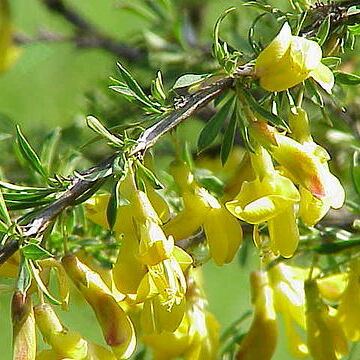A shrub. It grows 50 cm tall. The branches are golden yellow. They are hairy when young. The leaves have 4 leaflets. They are 7-17 mm long by 1-3 mm wide. The flowers occur singly and are yellow. The pod is narrow and 2-3 cm long. It is hairy when young.

